
David Lubega Balemezi, better known by his stage name Lou Bega, is a German singer. His 1999 song "Mambo No. 5", a remake of Pérez Prado's 1949 instrumental piece, reached no. 1 in many European countries and was nominated for a Grammy Award. Bega added his own words to the song and sampled the original version extensively. Bega's musical signature sounds consist of combining musical elements of the 1940s and 1950s with modern beats and grooves.
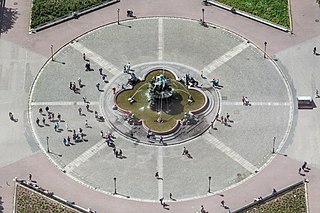
The Neptune Fountain in Berlin was built in 1891 and was designed by Reinhold Begas. The Roman god Neptune is in the center. The four women around him represent the four main rivers of Prussia at the time the fountain was constructed: the Elbe, Rhine, Vistula, and Oder. The Vistula is now entirely in Poland, while the Oder forms the border between Germany and Poland.
"Mambo No. 5" is an instrumental mambo and jazz dance song originally composed and recorded by Cuban musician Dámaso Pérez Prado in 1949 and released the next year.
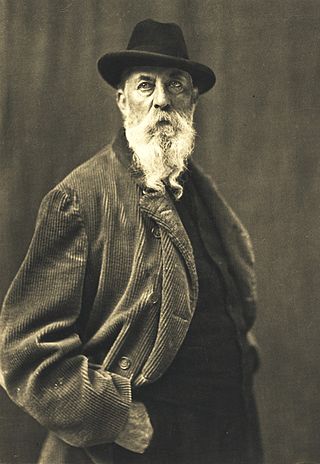
Reinhold Begas was a German sculptor.

Carl Joseph Begas, or Karl Begas, was a German painter who played an important role in the transition from Romanticism to Realism. He was the first in a multi-generational "dynasty" of artists.
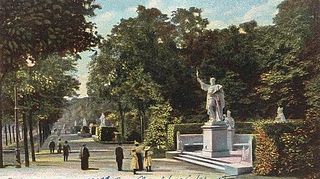
The Siegesallee was a broad boulevard in Berlin, Germany. In 1895, Kaiser Wilhelm II ordered and financed the expansion of an existing avenue, to be adorned with a variety of marble statues. Work was completed in 1901.
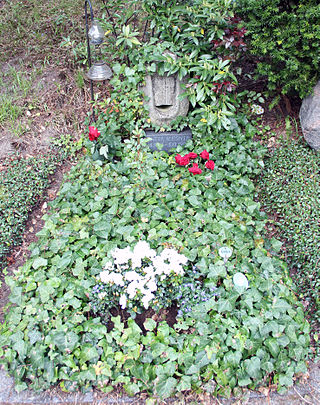
Günter Meisner was a German film and television character actor. He is remembered for his several cinematic portrayals of Adolf Hitler and for his role as Arthur Slugworth in Willy Wonka & the Chocolate Factory. He was fluent in four languages and appeared in many English-language, German-language and French-language films.

The Bega or Begej, is a 244 km long river in Romania and Serbia. It rises in the Poiana Ruscă Mountains in Romania, part of the Carpathian Mountains, and it flows into the Tisa river near Titel, Vojvodina, Serbia. Its drainage basin covers an area of 4,458 km2 (1,721 sq mi), of which 2,362 km2 (912 sq mi) in Romania.

Karl Begas was a German sculptor. To distinguish him from his father, he is often referred to as "the younger".

"Boyfriend" is a single by Lou Bega from his fourth album Free Again.

The National Kaiser Wilhelm Monument (Kaiser-Wilhelm-Nationaldenkmal) was a memorial structure in Berlin dedicated to Wilhelm I, first Emperor of Imperial Germany. It stood in front of the Berlin Palace from 1897 to 1950, when both structures were demolished by the German Democratic Republic (GDR) government.

Moltke Bridge is a bridge over the Spree River in Berlin, Germany. Completed in 1891, it connects Alt-Moabit near the main railway station on the north bank to Willy-Brandt-Straße and the Chancellery on the south bank. The bridge is named after Field Marshal Helmuth von Moltke the Elder (1800–1891), chief of staff of the Prussian Army for thirty years. Moltke died just before the bridge's completion and it was inaugurated by his funeral cortege. The bridge has three crossed arches spanning the Spree made from red Main sandstone, decorated with statues of Johannes Boese, Carl Piper and Carl Begas.

The Schiller Monument is located in central Berlin (Berlin-Mitte) on Gendarmenmarkt, in front of the flight of steps leading up to the former royal theater, today a concert hall. It honors the poet, philosopher and historian Friedrich Schiller, who is also regarded as one of the most significant dramatists and lyricists of the German language. The set of statues was executed by Reinhold Begas a prominent 19th-century German sculptor. It is a registered historic monument.
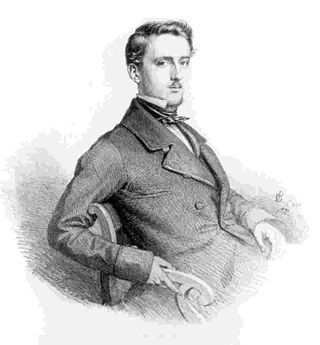
Oskar Begas was a German portrait and history painter.
Luise Begas-Parmentier (1843–1920) was an Austrian-German landscape and architecture painter and Salonière.

The Alexander von Humboldt Memorial to the right of the Humboldt University main building on Unter den Linden avenue in Berlin's Mitte district commemorates the Prussian polymath and natural scientist Alexander von Humboldt (1769–1859). Created in 1882 by Reinhold Begas in neo-baroque style, the marble statue is a masterpiece of the Berlin school of sculpture.

The Wilhelm von Humboldt Memorial to the left of the Humboldt University main building on Unter den Linden avenue in Berlin's Mitte district commemorates the Prussian polymath and education reformer Wilhelm von Humboldt (1767–1835). Created in 1882 by Paul Otto in neo-baroque style, the marble statue is a masterpiece of the Berlin school of sculpture.

Centaur and Nymph is an 1888 bronze sculpture by Reinhold Begas, installed in the Kolonnadenhof outside the Alte Nationalgalerie in Berlin, Germany.
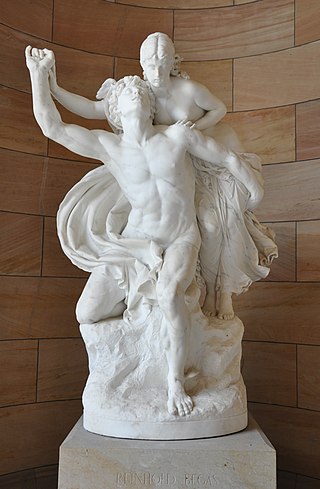
Mercury and Psyche is an 1878 marble sculpture by Reinhold Begas, housed at the entrance to the Alte Nationalgalerie in Berlin, Germany.

A statue of Alexander von Humboldt is installed on the exterior of Jordan Hall, in Stanford University's Main Quad, in the U.S. state of California.



















